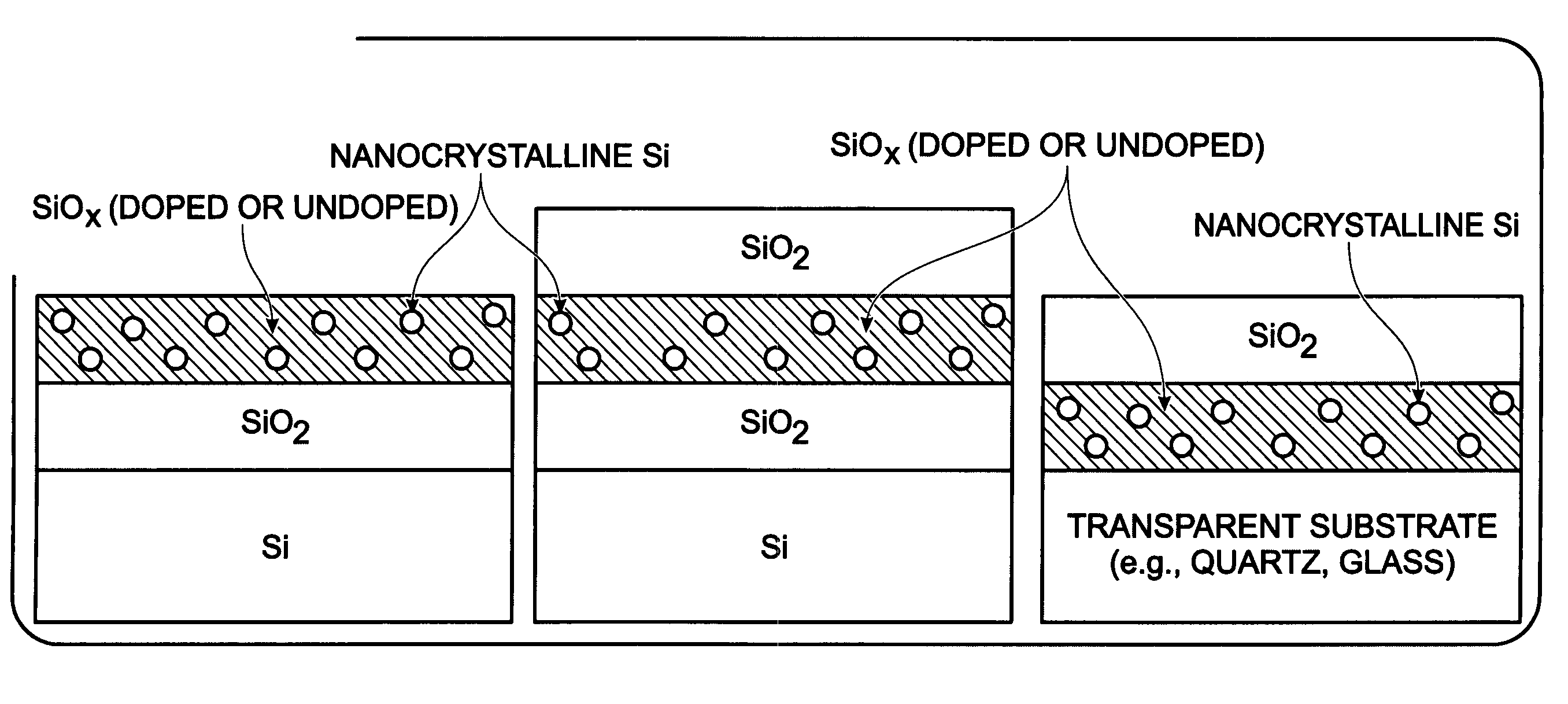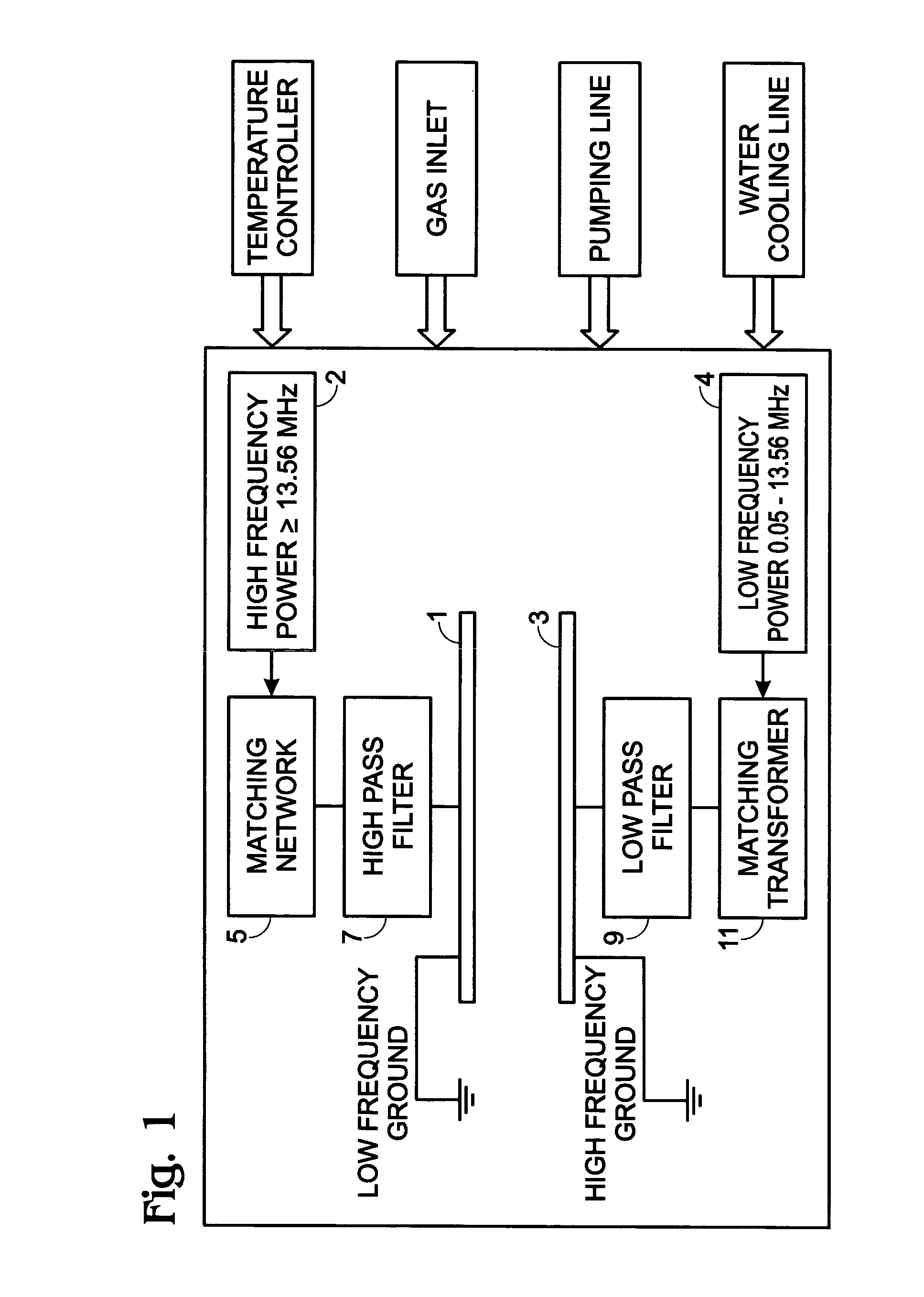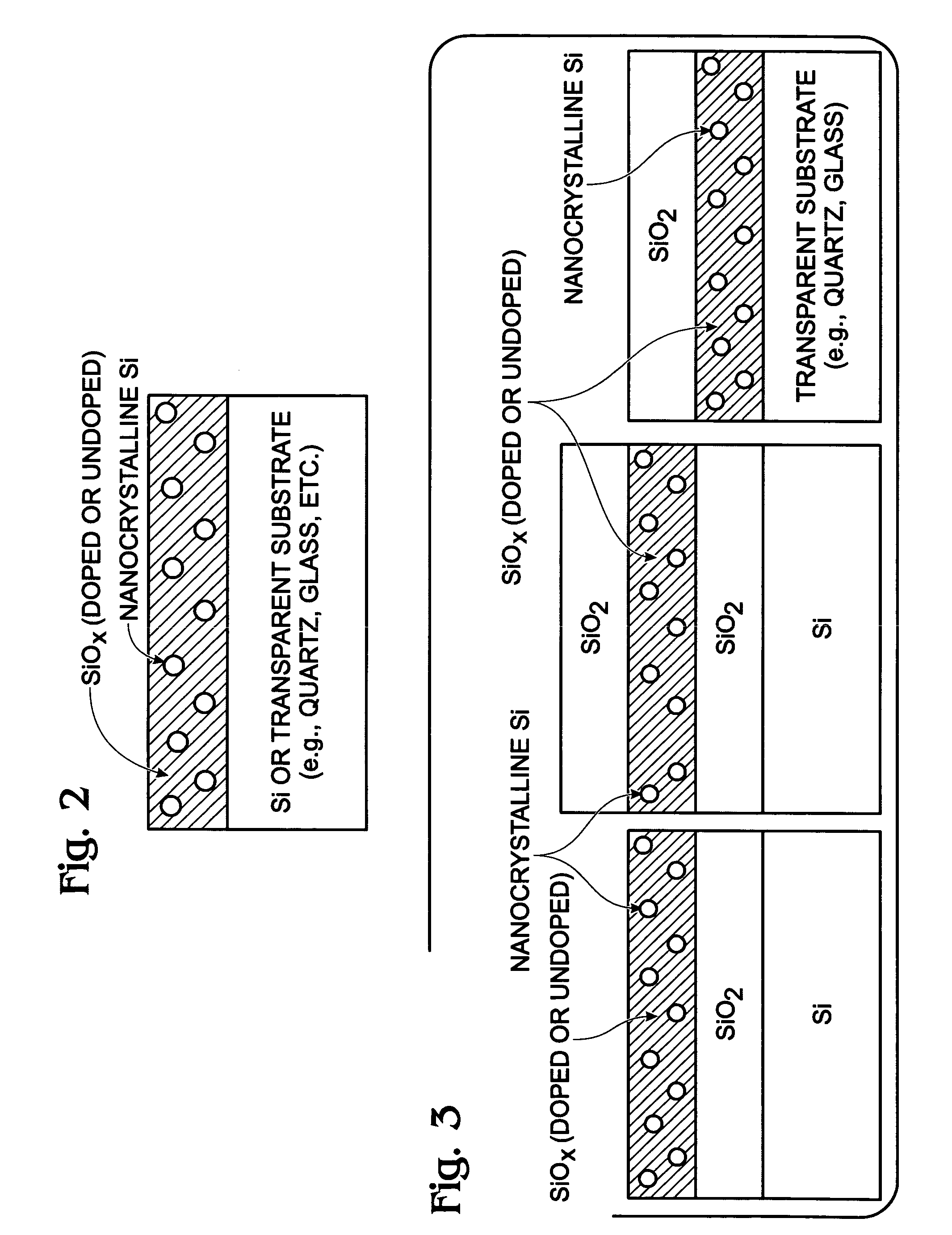Silicon oxide thin-films with embedded nanocrystalline silicon
a technology of nanocrystalline silicon and silicon oxide, which is applied in the direction of coating, chemical vapor deposition coating, coating process, etc., can solve the problems of low plasma density, low ion/neutral ratio, low plasma density, and inefficient power coupling to the plasma, so as to minimize the plasma induced bulk and interface damage, the effect of improving the kinetics of plasma reaction
- Summary
- Abstract
- Description
- Claims
- Application Information
AI Technical Summary
Benefits of technology
Problems solved by technology
Method used
Image
Examples
Embodiment Construction
High-Density Plasma System
[0031]FIG. 1 is a schematic drawing of a high-density plasma (HDP) system with an inductively coupled plasma source. The top electrode 1 is driven by a high frequency radio frequency (RF) source 2, while the bottom electrode 3 is driven by a lower frequency power source 4. The RF power is coupled to the top electrode 1, from the high-density inductively coupled plasma (ICP) source 2, through a matching network 5 and high pass filter 7. The power to the bottom electrode 3, through a low pass filter 9 and matching transformer 11, can be varied independently of the top electrode 1. The top electrode power frequency can be in the range of about 13.56 to about 300 megahertz (MHz) depending on the ICP design. The bottom electrode power frequency can be varied in the range of about 50 kilohertz (KHz) to about 13.56 MHz, to control the ion energy. The pressure can be varied up to 500 mTorr. The top electrode power can be as great as about 10 watts per square-centim...
PUM
| Property | Measurement | Unit |
|---|---|---|
| frequency | aaaaa | aaaaa |
| pressure | aaaaa | aaaaa |
| temperature | aaaaa | aaaaa |
Abstract
Description
Claims
Application Information
 Login to View More
Login to View More - R&D
- Intellectual Property
- Life Sciences
- Materials
- Tech Scout
- Unparalleled Data Quality
- Higher Quality Content
- 60% Fewer Hallucinations
Browse by: Latest US Patents, China's latest patents, Technical Efficacy Thesaurus, Application Domain, Technology Topic, Popular Technical Reports.
© 2025 PatSnap. All rights reserved.Legal|Privacy policy|Modern Slavery Act Transparency Statement|Sitemap|About US| Contact US: help@patsnap.com



